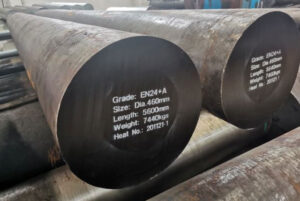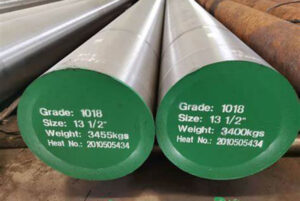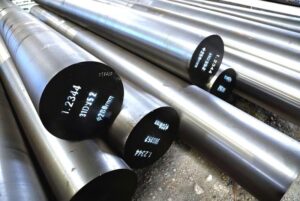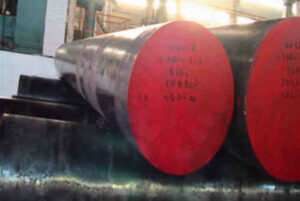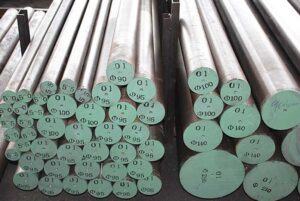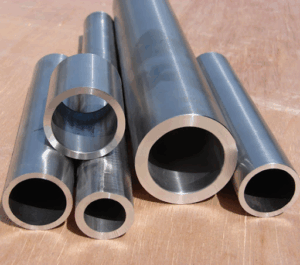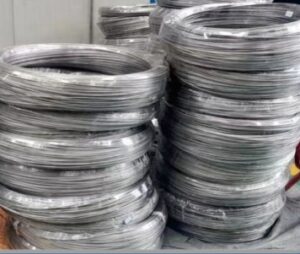Imagine a material that’s incredibly strong, can withstand immense pressure, and bends without breaking. That’s the essence of 30CrNiMo8/1.6580 alloy steel, a versatile workhorse in the world of engineering. But what exactly makes this steel so special? Let’s delve into its composition, properties, applications, and explore the reasons behind its widespread use.
the Composition of Special Steel 30CrNiMo8/1.6580
30CrNiMo8/1.6580 belongs to the category of low-alloy, nickel-chromium-molybdenum steels. Here’s a breakdown of its key components:
- Carbon (C): (0.26-0.34%) – The foundation for steel’s strength.
- Manganese (Mn): (0.50-0.80%) – Enhances hardenability and improves machinability.
- Chromium (Cr): (1.8-2.2%) – Boosts corrosion resistance and high-temperature strength.
- Nickel (Ni): (1.8-2.2%) – Improves toughness and weldability.
- Molybdenum (Mo): (0.3-0.5%) – Enhances tempering resistance and high-temperature strength.
This carefully balanced composition allows 30CrNiMo8 to achieve a remarkable combination of:
- High Strength: It boasts a tensile strength of 1100-1300 MPa, making it ideal for components under substantial stress.
- Excellent Toughness: The presence of nickel contributes to its ability to absorb impact without fracturing.
- Enhanced Hardenability: This steel readily responds to heat treatment, allowing engineers to tailor its properties for specific applications.
- Good Weldability: Compared to some high-strength steels, 30CrNiMo8 offers reasonable weldability with proper techniques.
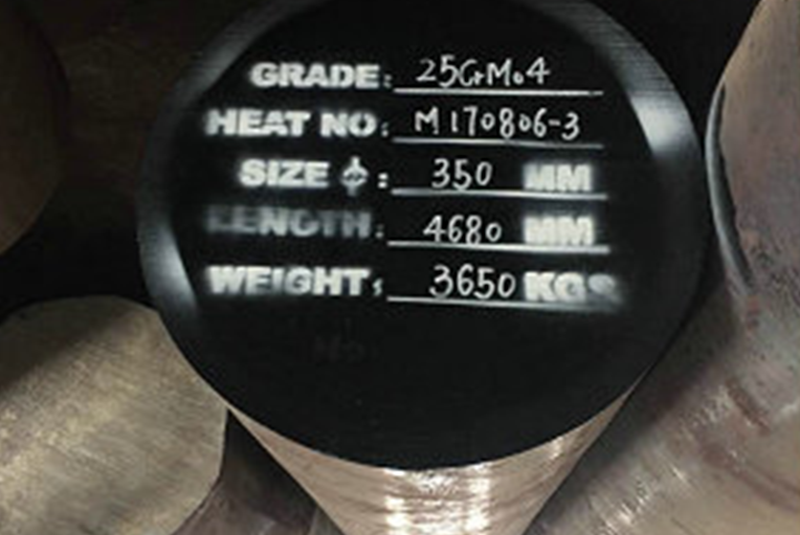
Composition of 30CrNiMo8/1.6580 Alloy Steel
| Nguyên tố | Percentage (wt%) | Key Property Enhancement |
|---|---|---|
| Carbon (C) | 0.26-0.34 | Sức mạnh |
| Manganse (Mn) | 0.50-0.80 | Hardenability, Machinability |
| Crôm (Cr) | 1.8-2.2 | Corrosion Resistance, High-Temperature Strength |
| Niken (Ni) | 1.8-2.2 | Toughness, Weldability |
| Molypden (Mo) | 0.3-0.5 | Tempering Resistance, High-Temperature Strength |
Understanding the Numbers: A Glimpse into Strength and Performance
The tensile strength of 1100-1300 MPa might not mean much on its own. Let’s put it in perspective: Imagine a steel rod with a cross-sectional area of 1 square centimeter. To break this rod made of 30CrNiMo8, you’d need a force of 1100-1300 Mega Newtons (MN) acting on it. That’s roughly equivalent to the weight of 1100-1300 tons!
Here’s another way to think about it. Compared to a common type of mild steel (like A36) with a tensile strength of around 250 MPa, 30CrNiMo8 is 4-5 times stronger. That’s a significant difference, making it a compelling choice for applications where high loads are a constant concern.
Applications of 30CrNiMo8/1.6580 Alloy Steel
The unique properties of 30CrNiMo8 make it a versatile material used across various industries:
Applications of 30CrNiMo8/1.6580 Alloy Steel
| Ngành công nghiệp | Examples |
|---|---|
| Automotive: | Gears, crankshafts, connecting rods, suspension components |
| Construction: | Heavy-duty bolts, crane hooks, lifting equipment |
| Oil and Gas: | Drill pipes, wellhead components, pressure vessels |
| Mining and Quarrying: | Excavator parts, crusher components, wear plates |
| Agriculture: | Shafts, gears, forgings for heavy machinery |
| General Engineering: | Gears, shafts, couplings, high-strength bolts |
Metal Powder Models for 3D Printing with 30CrNiMo8 Composition
While traditionally used in wrought forms like bars and plates, the potential of 30CrNiMo8/1.6580 alloy steel extends to the exciting world of 3D printing. Here, metal powder comes into play, allowing engineers to create complex shapes directly from digital models. However, not all metal powders are created equal. Let’s explore some specific models designed for 3D printing with 30CrNiMo8 composition:
Metal Powder Models for 3D Printing with 30CrNiMo8 Composition
| Model Name | Manufacturer | Key Features | Ứng dụng |
|---|---|---|---|
| Höganäs AM 304L | Höganäs AB | – Gas-atomized powder – High flowability for intricate geometries – Good packing density | – Gears – Shafts – Complex components for automotive and aerospace industries |
| AM Powder 30CrNiMo8 | LPW Technology | – Spherical morphology for optimal laser melting – Tightly controlled particle size distribution – Consistent mechanical properties | – High-strength components for oil and gas applications – Wear-resistant parts for mining and construction |
| EOS Nickel Chrome Moly 1.6580 | EOS GmbH | – Pre-alloyed for consistent composition – Excellent corrosion resistance – Optimized for EOS Laser systems | – Components requiring high strength and corrosion resistance in marine environments |
| SLM Solutions NiCr18Mo | SLM Solutions GmbH | – Fine powder for detailed features – Compatible with various SLM machines – Good balance of strength and toughness | – Gears, shafts, and other high-performance parts |
| Additive Industries ATI 316L | Additive Industries | – Nitrogen-atomized powder for improved flowability – High powder yield for cost-effectiveness – Suitable for both laser and electron beam melting | – Complex, high-strength components across various industries |
| Carpenter Additive Wire 17-4 PH | Carpenter Technology Corporation | – Can be used for wire arc additive manufacturing (WAAM) – Similar composition to 30CrNiMo8 with added copper for improved printability | – Large-scale components requiring high strength and good weldability |
| ExOne NiCrMo | ExOne | – Designed for binder jetting additive manufacturing – Good powder-binder interaction for strong green parts – Compatible with ExOne Innovent+ printing systems | – Industrial tooling, jigs and fixtures requiring high strength |
| Desktop Metal DM20 | Desktop Metal | – Single-alloy powder for bound metal deposition (BMD) – Excellent jetting properties for high printing speeds – Suitable for Desktop Metal printers | – Functional prototypes and low-volume production of high-strength parts |
| Elementum 30CrNiMo8 | Elementum | – Available in various particle sizes for different printing processes – Certified to meet specific industry standards – Consistent quality for reliable printing results | – Broad range of applications across various industries |
| XKEM 30CrNiMo8 | XKEM | – Cost-competitive option for 3D printing – Tightly controlled chemistry for predictable performance – Reliable source for high-volume printing projects | – Gears, shafts, and other high-strength components requiring cost-efficiency |
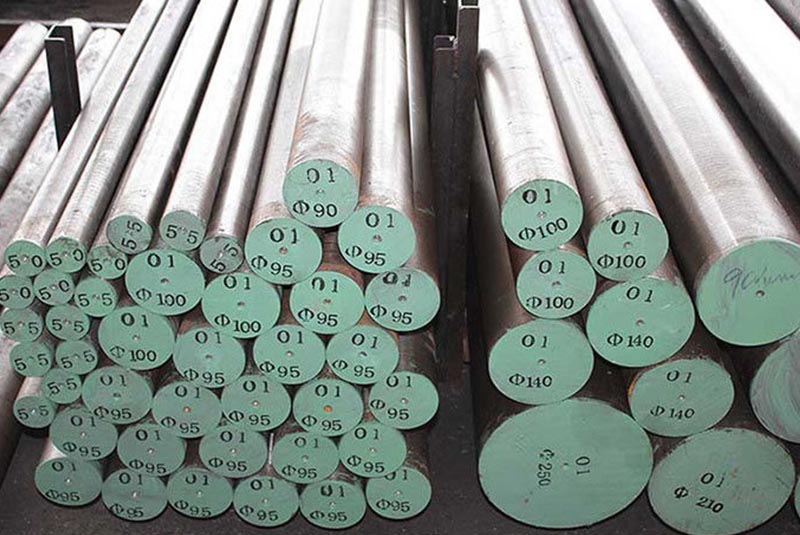
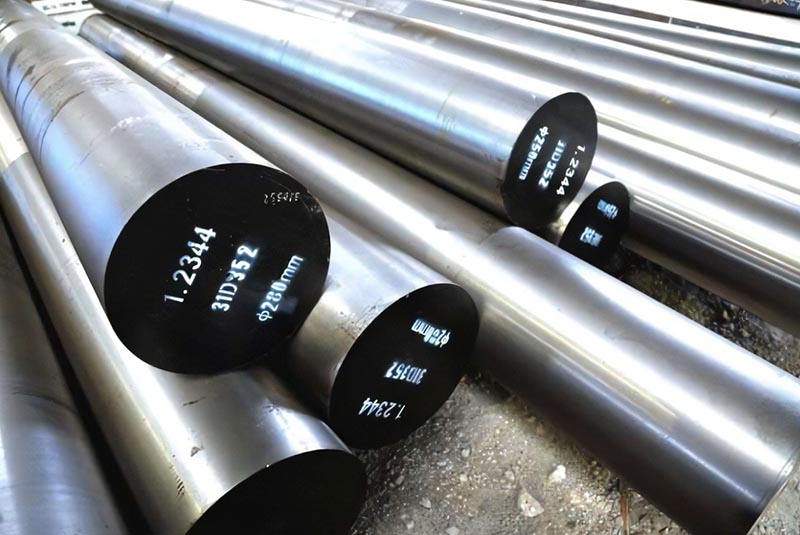
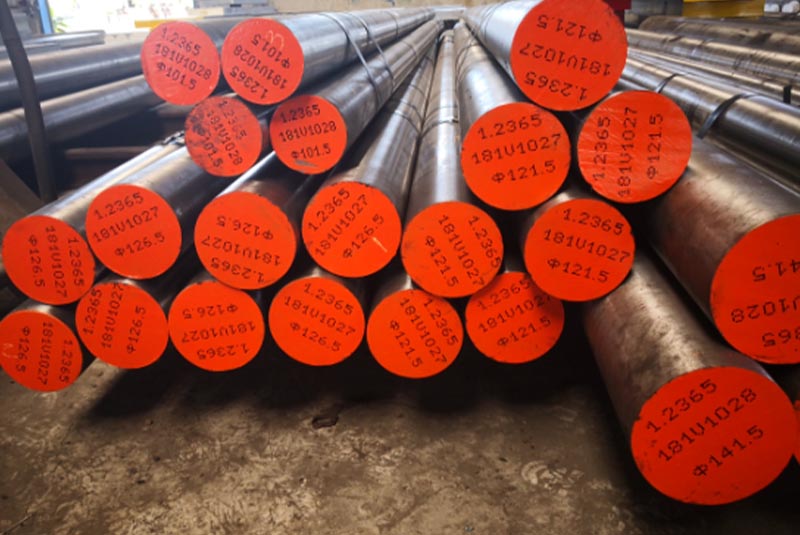
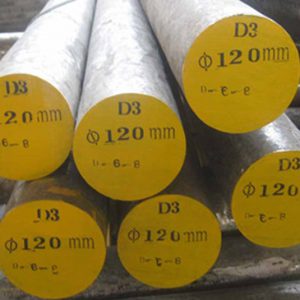
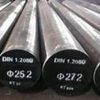
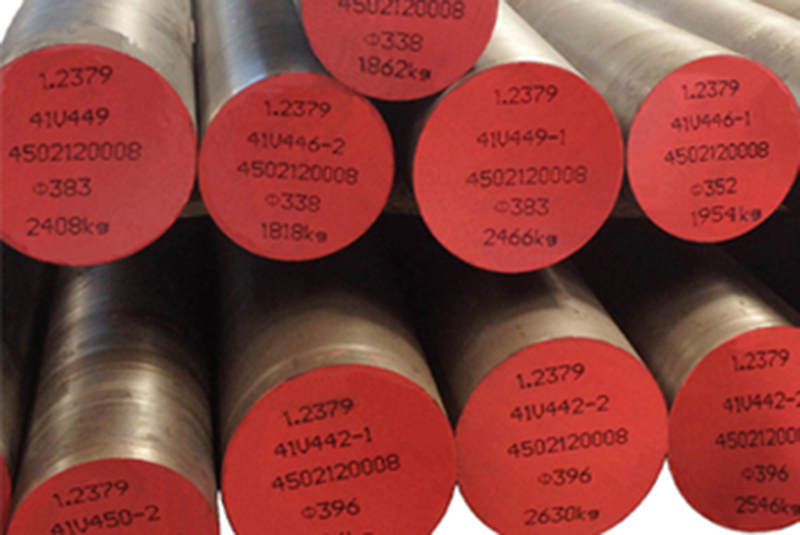
Choosing the Right Metal Powder: A Balancing Act
Selecting the ideal metal powder hinges on several factors:
- 3D Printing Process: Different processes like laser melting, binder jetting, or WAAM have varying powder requirements.
- Desired Properties: Focus on factors like flowability for intricate features, strength for high-stress applications, or corrosion resistance for specific environments.
- Machine Compatibility: Ensure the powder is compatible with your specific 3D printer for optimal results.
- Cost Considerations: Metal powders can vary significantly in price. Consider the balance between cost and desired performance.
The Future of 3D Printing with 30CrNiMo8
As 3D printing technology matures, metal powders like 30CrNiMo8 offer exciting possibilities. We can expect advancements in:
- Powder Characteristics: Improved flowability, tighter size distribution, and enhanced printability for even more complex geometries.
- Material Properties: Development of new alloys based on 30CrNiMo8 with tailored properties like improved wear resistance or higher temperature performance.
- Cost Reduction: More efficient production methods and recycling initiatives could lead to more cost-effective metal powders, making 3D printing with 30CrNiMo8 even more accessible.
the Pros and Cons of 30CrNiMo8
30CrNiMo8/1.6580 alloy steel isn’t a one-size-fits-all solution. While it boasts impressive qualities, it’s essential to understand its limitations to make informed material selection decisions.
Advantages of 30CrNiMo8 Alloy Steel
- High Strength: As we’ve established, 30CrNiMo8 packs a punch, making it ideal for components under significant stress. This translates to increased load-bearing capacity and longer service life in demanding applications.
- Excellent Toughness: The presence of nickel enhances its ability to absorb impact without fracturing. This is crucial for parts that experience shock loading or sudden impacts.
- Enhanced Hardenability: This steel readily responds to heat treatment, allowing engineers to fine-tune its properties for specific needs. By adjusting the heat treatment process, hardness, strength, and toughness can be tailored for optimal performance.
- Good Weldability: Compared to some high-strength steels, 30CrNiMo8 offers reasonable weldability with proper techniques. This expands its applicability in situations where welded assemblies are necessary.
- Corrosion Resistance: The chromium content provides a layer of protection against corrosion, making it suitable for environments with moderate exposure to moisture or chemicals.
- Versatility: 30CrNiMo8 finds applications across diverse industries, from automotive and construction to oil and gas and agriculture. This speaks to its adaptability and well-rounded properties.
Limitations and Considerations
- Machinability: While not the most challenging steel to machine, 30CrNiMo8’s strength can present some difficulties compared to softer steels. It might require specialized tooling and slower machining speeds to achieve optimal results.
- Cost: Compared to some common steels, 3D-printed 30CrNiMo8 can be more expensive due to the cost of the metal powder itself and the potential for higher printing times.
- Not Ideal for All Corrosion Environments: While it offers moderate corrosion resistance, 30CrNiMo8 might not be suitable for highly corrosive environments like seawater or harsh chemicals. In such cases, stainless steels or other corrosion-resistant alloys might be a better choice.
- Hydrogen Embrittlement: This steel is susceptible to hydrogen embrittlement under certain conditions, particularly during electroplating or welding. Proper procedures and precautions are necessary to mitigate this risk.
Making an Informed Decision
By carefully weighing the strengths and limitations of 30CrNiMo8, you can make an informed decision about its suitability for your specific application. Consider the following:
- Required Strength and Toughness: Can 30CrNiMo8 handle the anticipated loads and impacts?
- Corrosion Concerns: Will the environment pose a significant corrosion threat?
- Machinability Requirements: How critical is ease of machining for your project?
- Budgetary Constraints: Does the cost of 30CrNiMo8 fit within your project budget?
Remember, there’s no single “best” material. The optimal choice depends on the unique demands of your application.

Câu hỏi thường gặp
Q: What are some alternative steels to 30CrNiMo8?
A: Depending on the specific needs, several alternatives exist. Here are a few examples:
- 4140 Chromoly Steel: Offers good strength, toughness, and machinability, but with slightly lower strength than 30CrNiMo8.
- SAE 4340 Steel: Similar to 4140 but with higher nickel content, improving toughness at the expense of some machinability.
- 17-4 PH Stainless Steel: Offers high strength, good corrosion resistance, and excellent machinability, but can be more expensive than 30CrNiMo8.
Q: How does 30CrNiMo8 compare to mild steel in terms of strength?
A: Mild steel, like A36, typically has a tensile strength of around 250 MPa. In comparison, 30CrNiMo8 boasts a tensile strength of 1100-1300 MPa. This translates to 4-5 times the strength, making 30CrNiMo8 a much better choice for high-stress applications.
Q: Is 30CrNiMo8 suitable for welding?
A: Yes, 30CrNiMo8 can be welded with proper techniques. However, preheating and post-weld heat treatment might be necessary to minimize the risk of cracking. Consulting with a qualified welder is recommended for optimal results.
Kết luận
30CrNiMo8/1.6580 alloy steel stands out as a reliable and versatile material for various demanding applications. Its exceptional combination of strength, toughness, and good weldability makes it a go-to choice in industries like automotive, construction, oil and gas, and more. The ability to tailor its properties through heat treatment and other processing techniques further expands its capabilities. As 3D printing technology evolves, metal powders based on 30CrNiMo8 offer exciting possibilities for creating complex, high-strength components directly from digital models. By understanding the strengths, limitations, and various processing options, you can leverage 30CrNiMo8 to its full potential and bring your engineering vision to life.

